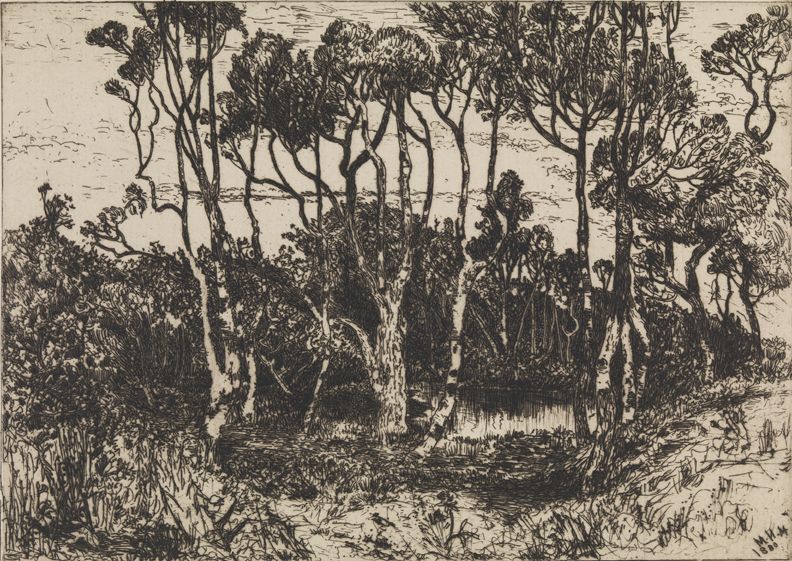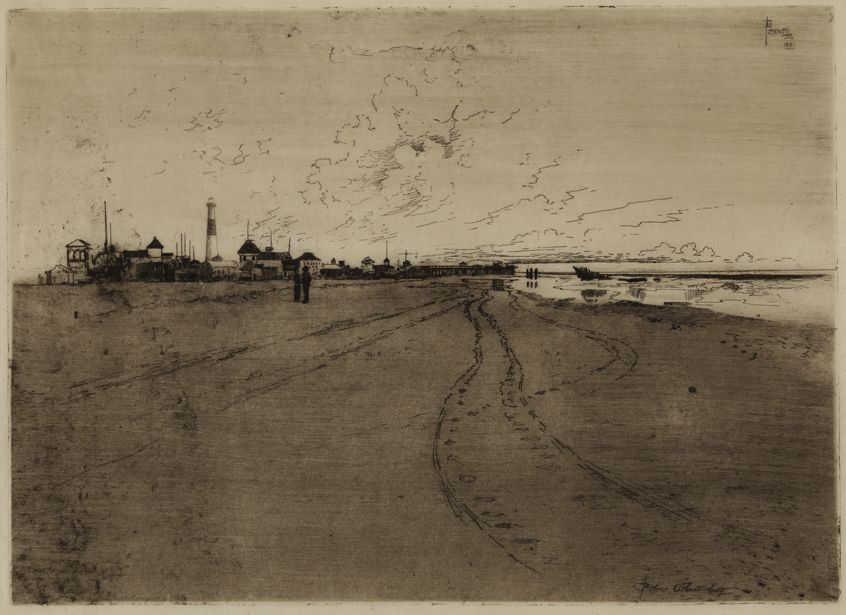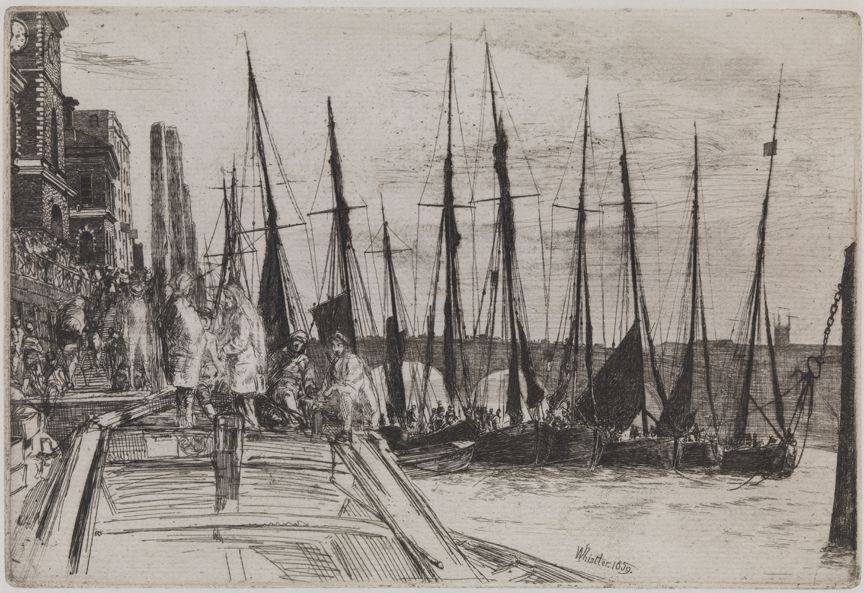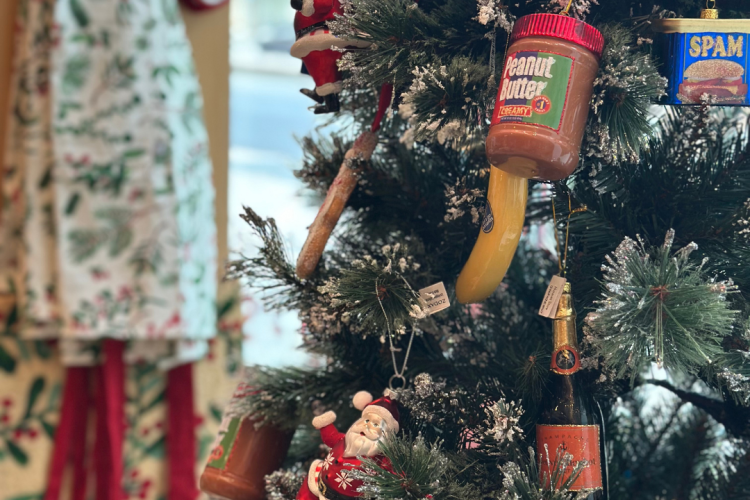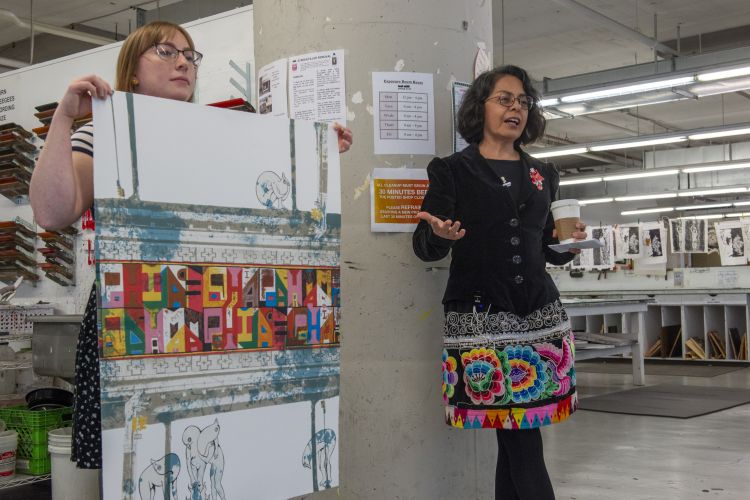STORIES FROM PAFA
Etchings From a 130-Year Old Exhibition on View This Summer
The first annual exhibition of the Philadelphia Society of Etchers was held at PAFA in 1882 and at the time was the largest print exhibition organized in the United States. The exhibition helped establish the Etching Revival in the United States in the late 1800s.
Several etchings first shown in 1882 are going on view again at PAFA this summer as part of Etch and Flow. The exhibition, on view June 28, 2019 through December 29, 2019, will dive into the American Etching Revival and Impressionism.
Etchings like Joseph Pennell’s “Below Atlantic City” and his “Coal Wharf on Schuylkill” were originally exhibited at PAFA in 1882 as part of a push to showcase the new world of etching and will be seen again this summer in the museum.
The exhibition opens alongside From the Schuylkill to the Hudson: Landscapes of the Early American Republic. From Schuylkill to Hudson covers the late 1700s to late 1800’, which saw the rise of landscape representation in the early United States. Etch and Flow covers the next generation of artists who etched instead of painted to capture landscapes. With many of the artists featured in Etch and Flow taking inspiration from the same waterscapes that moved artists featured in From Schuylkill to Hudson.
Up until the late 1870s etching was seen as a way to make copies of artwork, not a creative medium in its own right.
“Typically etching was seen as primarily a reproductive medium, so if an artist created a painting, of course not everyone can buy that painting but you could make an etching of that painting and sell it for a vastly reduced price and in multiples,” said Etch and Flow curator Ramey Mize, a doctoral candidate at the University of Pennsylvania. “It was a way to make art for the people and democratize things.”
The American Etching Revival brought a new style of etching to the US, loosening up the original traditions of the practice.
“Rather than enacting this extremely tight and detailed sort of reproductive technique which serves the needs of reproducing a painting, a looser, freer, more fluid type of line was encouraged on the plate for etchings during the revival.”
This new style also brought many more women artists into the practice and they became celebrated etchers at the time. Etching was considered a way for women artists to gain a foothold in professional careers in arts.
Mary Nimmo Moran showed 17 etchings in the 1882 Philadelphia Society of Etcher’s Exhibition and will be featured prominently in Etch and Flow.
The Philadelphia artist was well-known for her etchings. “She kept a membership at the New York Etching Club and was a pioneer in that way,” Mize
Her etching, "Solitude," was part of the first Philadelphia Society of Etchers exhibition and will be on view again as part of Etch and Flow.
Moran, alongside Edith Loring Pierce, Katherine Levin Farrell, Gabrielle DeVeaux Clements, and Margaret Taylor were part of a contingent of women etchers who helped lead the Etching Revival in the United States.
Their work not only inspired other etchers but artists in other mediums, as well.
“There’s a painting by William Sartain, a notable PAFA figure, called Solitude from 1892 and it resonates really well with an etching by Edith Loring Pierce, also titled “Solitude” that is markedly similar in composition.
"This is not to say that Sartain was copying after Pierce, but rather that it was a frequent motif amongst these artists."
Much of Loring Pierce’s work is centered on her Southeastern Pennsylvania upbringing.
Etch and Flow showcases landscapes from across Europe and the United States, but it’s the local work that curator Ramey Mize wants visitors to give an extra look to when they visit PAFA.
“I hope that visitors walk away with an appreciation for the persistence of the landscape genre in this area,” Mize said. “And maybe they’ll look more closely at the scenery in and around Philadelphia and appreciate it for its longevity and for its symbolic centrality in the history of art in the United States. It’s about taking pride in place.”
Etch and Flow is on view June 28th through December 29th at PAFA.
We're so excited you're planning to visit PAFA!
Make time for art — visit us Thursday to Sunday.
Before reserving your tickets, please review helpful information about museum hours, accessibility, building access, and special admission programs.
If you have any questions, feel free to reach out to us at visitorservices@pafa.org — we’d love to help!
